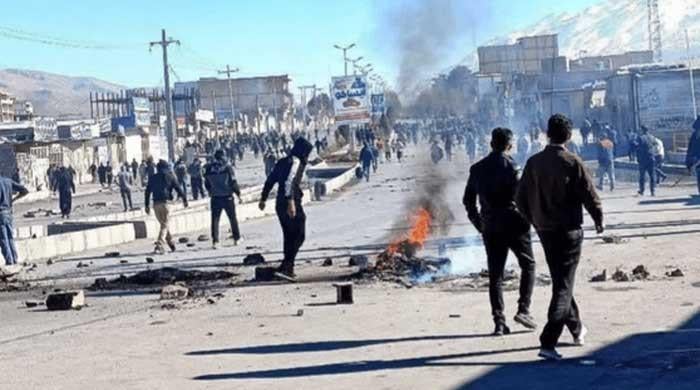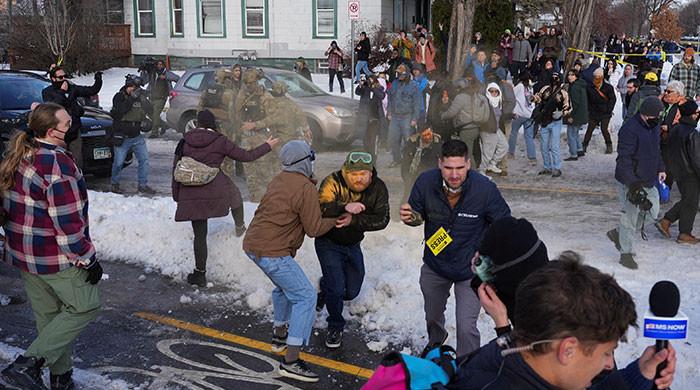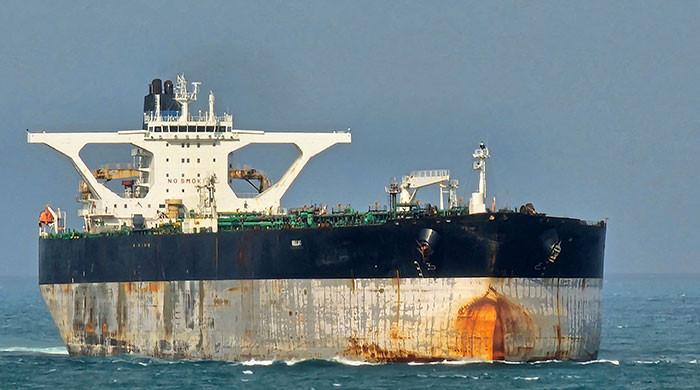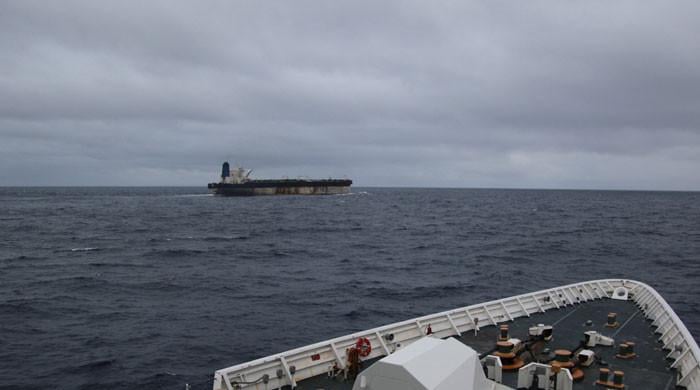Eight dead, millions without power as typhoon hits Philippines
MANILA: Typhoon Nari pummelled the northern Philippines early Saturday, ripping roofs off buildings, killing eight people and leaving more than two million people without electricity.Nari slammed...
October 12, 2013
Nari slammed into the Asian country's east coast around midnight (1600 GMT Friday), toppling trees and pylons as it cut a westward swathe through the farming regions of the main island of Luzon, officials said.
"A lot of big trees have fallen down. Clean-up crews with chainsaws are out to clear the roads," British freelance journalist James Reynolds told from the coastal town of Baler, near where Nari had hit land.
"The wind picked up very quickly, very dramatically. We had the wind coming right off the ocean for four hours, very strong, typhoon-force winds," said Reynolds, who had checked into a hotel two hours before the typhoon struck.
As Nari moved inland, dumping rain, a wall of mud fell on a police barracks near the town of Magalang, killing an officer awaiting deployment to rescue typhoon victims, the National Disaster Risk Reduction and Management Council said.
A person was electrocuted by a loose power line in nearby Candaba town, while trees fell on a house and a vehicle in Nueva Ecija province, killing three people, the council's spokesman Rey Balido told a news conference in Manila.
Two children and an elderly person drowned in the province of Bulacan, which suffered widespread flooding, provincial governor Wilhelmino Alvarado told ABS-CBN television in an interview.
In the Bulacan town of San Ildefonso, Frankie Gracia, 30, was nearly swept away and had to be pulled back to safety by two policemen when he tried to cross a street that had turned into a raging river.
The typhoon blacked out 37 towns and cities across central Luzon, according to a tally by the civil defence office in the region.
Road and utility crews were out clearing roads and restoring power, but it could take up to two days before electricity is restored and major highways are reopened to traffic, Nigel Lontoc, a disaster official for the region told.
A total of 2.1 million people live in the areas now without electricity, according to official population figures.









